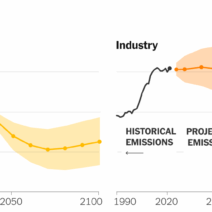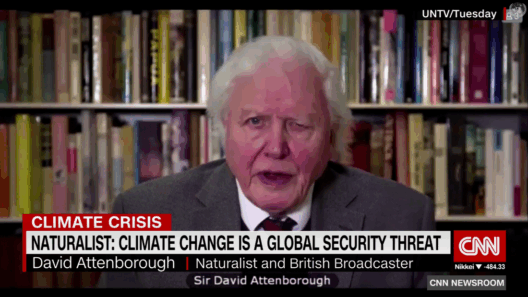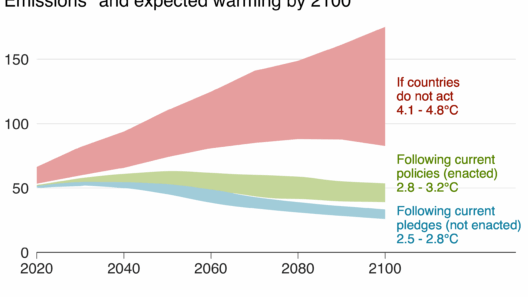The ocean is a colossal entity, covering more than 70% of the Earth’s surface and playing a pivotal role in the regulation of our planet’s climate. It functions as a carbon sink, absorbing vast amounts of carbon dioxide (CO2) from the atmosphere, which subsequently mitigates some of the effects of global warming. However, this vital ecosystem also faces significant threats due to climate change, experiencing detrimental consequences that undermine its crucial contributions. This duality presents an intricate challenge in understanding both the benevolent and malevolent roles of the ocean in the context of global warming.
To grasp the multifaceted role of the ocean in the climate crisis, it is imperative to explore its function as a carbon sink. Through a phenomenon known as biological carbon sequestration, marine organisms, particularly phytoplankton, play an essential part. These microscopic plants photosynthesize, converting CO2 into organic matter while releasing oxygen. This dynamic process not only contributes to the production of oxygen, essential for life on Earth, but also facilitates the long-term storage of carbon in oceanic depths. When these organisms die, their bodies sink and deposit carbon in the ocean floor, sometimes for millennia, thereby removing it from the atmosphere.
Additionally, oceans absorb approximately 30% of the carbon dioxide released into the atmosphere by human activity. This absorption helps to mitigate the greenhouse effect but concurrently leads to a detrimental side effect known as ocean acidification. When CO2 dissolves in seawater, it forms carbonic acid, which decreases the pH of ocean waters. The ensuing chemical changes place immense stress on marine life, especially organisms that rely on calcium carbonate to form their shells and skeletons. Coral reefs, for example, face significant risks as acidified waters inhibit their ability to calcify, threatening biodiversity and the ecosystems that rely on these underwater structures.
Furthermore, the warming of ocean waters has profound implications for global weather patterns. The ocean acts as a heat reservoir, absorbing heat from the atmosphere and redistributing it through currents. However, as ocean temperatures rise, the likelihood of extreme weather events increases. Elevated temperatures correlate with stronger hurricanes, more intense storms, and prolonged droughts, which can devastate coastal communities and disrupt local economies reliant on fishing and tourism. Such events serve as a reminder that while the ocean can temper climate fluctuations, it is also a harbinger of severe climate-related consequences.
The ocean’s plight is further exacerbated by the phenomenon of sea level rise. Melting polar ice caps and glaciers, alongside the thermal expansion of seawater, contribute to rising sea levels. Coastal areas are particularly vulnerable, facing erasure of land, increased flooding, and salinization of freshwater resources. Communities worldwide confront the harsh reality of displacement, leading to social and economic strife and the potential for climate refugees. The intrinsic connection between the ocean’s condition and socio-economic stability underscores the importance of sustainable marine management.
A further aspect of the ocean’s double role lies in its capacity to generate renewable energy. Tidal and wave energy offer promising alternatives to fossil fuels, and harnessing these resources can contribute to reducing greenhouse gas emissions. The ocean can be a significant ally in transitioning to a sustainable energy future. By investing in technology that captures its kinetic energy, nations can not only lessen their reliance on non-renewable resources but simultaneously address climate change. However, the impact of such initiatives must be carefully evaluated to prevent ecological disturbances in marine ecosystems.
Moreover, marine ecosystems play a crucial role in biodiversity conservation and maintaining the balance of life on Earth. Healthy oceans provide a habitat for innumerable species, many of which are crucial in the food chain. However, overfishing and habitat destruction threaten these habitats. The decline of marine biodiversity can lead to ecological imbalances, which in turn affects human food security and livelihoods. Sustainable fishing practices and marine protected areas are essential strategies that can mitigate these adverse effects and foster resilience in the face of climate change.
Concurrently, the ocean serves as a resource for carbon dioxide removal technologies. Ocean-based climate solutions, such as seaweed cultivation, present innovative methods to sequester carbon while providing food and economic benefits. Seaweed can absorb carbon as it grows, potentially leading to dual gains for the environment and communities. By investing in such initiatives, we can bolster the ocean’s capacity to mitigate climate change while promoting sustainable practices.
The interrelationship between the ocean and climate change is one of tremendous complexity. Its role encompasses both safeguarding atmospheres through carbon storage and simultaneously suffering from the ramifications of climate change. As we navigate forward, it is vital that strategies integrate the ocean’s dual role into climate policies and actions. Innovation, conservation, and sustainable management will ensure that the ocean remains a protector rather than a victim in the fight against global warming.
In conclusion, understanding the ocean’s contribution to climate regulation requires a holistic approach that recognizes both its potential and its vulnerabilities. The challenges posed by climate change present opportunities for a renewed commitment to ocean health and sustainability, which will ultimately benefit both marine and terrestrial habitats. The future of our planet hinges on transformative actions today to safeguard our oceans and, in turn, our collective future.






